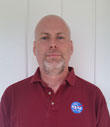Keynote: EMC Test Challenges for NASA’s James Webb Space Telescope
Download slide presentation here.
Overview:
The James Webb Space Telescope (JWST) will be the premier observatory of the next decade, serving thousands of astronomers worldwide. It will study every phase in the history of our Universe, ranging from the first luminous glows after the Big Bang, to the formation of solar systems capable of supporting life on planets like Earth, to the evolution of our own Solar System. The science payload of JWST is the Integrated Science Instrument Module (ISIM), which consists of four instruments. This presentation describes the challenges associated with the electromagnetic compatibility (EMC) tests performed on the ISIM at NASA’s Goddard Space Flight Center (GSFC) in August 2015. By its very nature of being an integrated payload, it could be treated as neither a unit level test nor an integrated spacecraft/observatory test. Non-standard test criteria are described along with non-standard test methods that had to be developed in order to evaluate them. Results are presented to demonstrate that all test criteria were met in less than the time allocated.
 Speaker: John McCloskey
Speaker: John McCloskey
John McCloskey is the Chief EMC Engineer at NASA Goddard Space Flight Center in Greenbelt, Maryland, where he has worked since May 1988, after earning his B.S. in Electrical Engineering from Penn State University. For much of his first decade at NASA, he worked as a design engineer and contributed to such flight projects as the CIRS instrument aboard the Cassini spacecraft that is orbiting Saturn. Around the beginning of his second decade, he took an opportunity to move into Electrical Systems Engineering, contributing to such projects as EOS Aqua and the James Webb Space Telescope (JWST).
As with many EE’s, John learned EMC through the “school of hard knocks.” He had to have it beaten into his system over his first two decades at NASA, dealing with the various problems on the projects mentioned above. At around the beginning of his third decade, he learned that Goddard was looking for a new Chief EMC Engineer. John jumped at the opportunity, got the gig, and has never looked back.
John really enjoys teaching and training, and he has provided many EMC training and education opportunities for the Goddard workforce. In addition to teaching several classes himself, he has brought in the occasional outside expert to provide a broader perspective. To date, these experts include Ken Javor (who is already on John’s payroll), Henry Ott, and Bruce Archambeault.
John is pleased and honored to have this opportunity to share these experiences with the EMC Community, and he is very pleased to see continued interest in this topic.
The following are questions presented to the speaker by the attendees during the webinar, along with answers to each.
Is there a static condition due to the plastic packaging? How does this affect your field probe reading during radiated susceptibility test?
Answer: There may well be a static condition due to the bagging material (which is called Melinix; see response to question below). We did not quantify this. However, any static charge would create a DC potential on the surface of the material, and the field probes are designed to respond to high frequencies only. In the event that any discharges/arcing occurred, those would be very fast transient events to which the field probes would either not respond or average out.
Excellent presentation, and really inspiring work. I wanted to know how did you obtain the antenna factors for the custom antenna positions that you selected during RE testing?
Answer: That very concern led to our decision to define all of our RE antenna positions to be at distance of 1 meter from the nearest point of the EUT. That enabled us to simply use the 1 meter calibration factors instead of worrying about custom factors. We knew that all of the antennas on the spacecraft will be further than 1 meter from ISIM. The measurements show that we are well below the limit at 1 meter; we can conclude that we will definitely be OK at larger distances.
What is the link to JWST (live webcam feed on front page)?
Answer: http://www.jwst.nasa.gov/webcam.html
How did you verify that the bagging did not impact your results?
Answer: This question is not a new one. Most, if not all, spacecraft have contamination concerns and need to be bagged eventually. In 2006 for a previous program, the GSFC EMI test group tested different candidate bagging materials for RF transparency. As documented in the test report, Melinix exhibited very low attenuation across the frequency range of the test, which was 10 kHz – 30 GHz. The maximum attenuation was 1.3 dB in the range of 1 – 5 GHz for a double layer. Over most of the frequency range, the attenuation was less than 1 dB. Melinix was clearly the superior material of all those tested from an RF standpoint. For this reason, it is the standard bagging material of choice for RF testing at GSFC.
